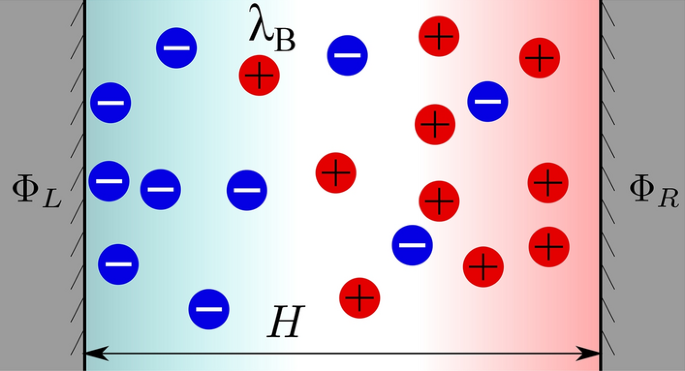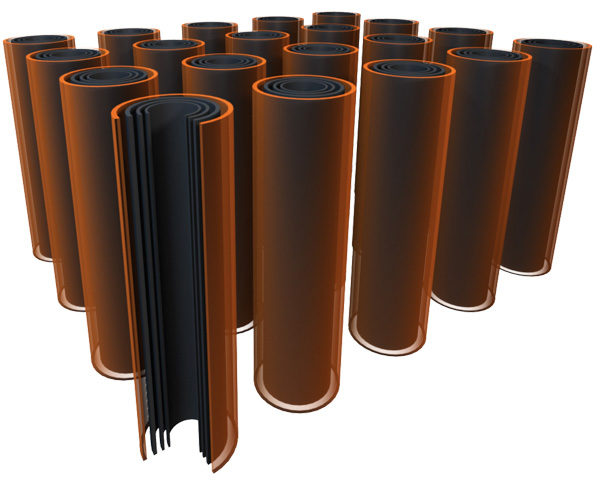A final summary of the topic (nano supercapacitors)
Researcher and author: Dr. ( Afshin Rashid)
Note: Production of nano supercapacitors using nanoparticles that can be polarized so that electrical energy can be stored. The multi-layer technology of nano structure (solid state) is a known dielectric material that is used in nano supercapacitors because it is a piezoelectric and ferroelectric material. In this work, by creating passive filters, the storage capability between different types of this nano They provide electrical layers.
The amount of electrical properties in solid materials ( nano supercapacitors) is very diverse. Based on the amount of resistance ( nano supercapacitors) against the passage of electric current, different materials can be classified into conductive, semi-conductive and insulating categories. This is despite the fact that in superconductors there is a different mechanism to guide electrons. The electrical conductivity of a ( nano-supercapacitor) can be attributed to the number of free electrons that move freely in the material under the influence of an external electric field, as well as the mobility, which is a measure of the ability and speed of the movement of free electrons.
Due to the need to implement expanded power, nano-supercapacitors emerge as an alternative compared to traditional electrical energy storage devices. Nanosupercapacitors, also called electrochemical supercapacitors or nanocapacitors, thus emerge as promising fuel sources with astonishingly fast charge release rates. Amazing fast charging. Created to improve power execution (high speed capability), they still rely on the same inherent breakpoints. Nanosupercapacitors , also called supercapacitors or electrochemical capacitors, thus emerge as promising fuel sources with astonishingly fast charge release rates.Lithium particle batteries have been developed to improve power performance (high speed capability), they still rely on the same inherent cutoff points. Nanosupercapacitors , also called supercapacitors or electrochemical capacitors, thus emerge as promising fuel sources with astonishingly fast charge release rates . Unlike dielectric capacitors that store energy as isolated electric charge.
Nano supercapacitors store energy electrostatically by polarizing an electrolyte solution. When a voltage is applied to the positive and negative cathodes of a supercapacitor, the particles in the electrolyte are drawn to the oppositely charged anodes. Reverse charges are separated at the interface between the strong surface of the terminal and the fluid electrolyte in the micropores of the cathodes, creating an exceptional "electrochemical double layer". Energy is thus discarded as charge partitioning between the double layer. Due to their unique properties, carbon nanotubes are a promising material for advanced nano supercapacitors. In particular, the use of nanotubes to make cathodes of nanosupercapacitors can increase the power thickness and performance of nanosupercapacitors compared to conventional dielectric capacitors. The authors describe various techniques for developing nano-supercapacitors using nanostructured materials and additionally chart the benefits of this imaginative form of energy storage. In conventional flat sheet dielectric capacitors, the capacitance of the capacitor inversely depends on the separation between the electrodes. Interestingly, the capacitance of a supercapacitor depends on the separation between the terminal charge and the countercharge in the electrolyte, which is much less than that of a dielectric capacitor. After that, super capacitors have a very large capacity. In total, the capacity of nano supercapacitors is several times that of standard dielectric capacitors.Current versus voltage curves provide a means of classifying the charge storage mode. Usually, a (nano-supercapacitor) is independent of the potential and therefore conducts the current independent of the potential. (nano-supercapacitor) is used to describe devices that use quasi-capacitors to store capacitive energy. This performance shows that Faradaic electron transport plays a role in charge storage and sheds light on the properties of a particular device. (Nano supercapacitor) It is necessary to integrate the curve of the voltage of the cell against the capacity and normalize it with the mass or volume of the active substance. Graphically, it is the area under the voltage versus specific capacitance curve. By considering a ratio of the areas under the discharge and charge curves, the energy efficiency of the device can be calculated - for a supercapacitor it should be close to 100%.
Researcher and author: Dr. ( Afshin Rashid)
Specialized doctorate in nano-microelectronics








